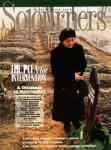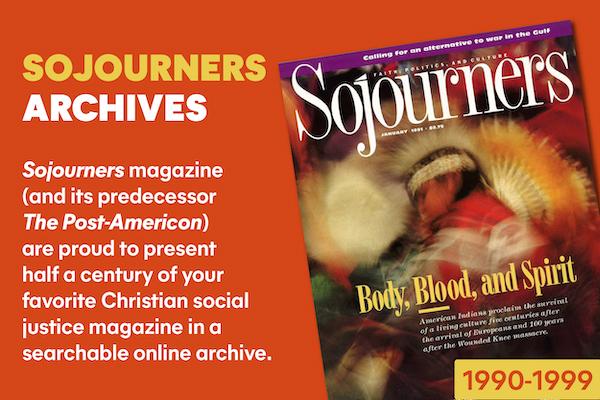The first time I met Dizzy Gillespie in person was at the 1984 New Orleans Jazz and Heritage Festival, standing in the doorway of Sun Ra's dressing room. Ra was sitting in the middle of a circle of young musicians and admirers, holding court, talking about the music and spreading the word of his cosmic experiences.
Diz stood there, leaning against the doorjamb, engrossed with the sight. I stood beside him for a moment, fascinated by his attentive concentration on the scene.
"What do you think of Sun Ra, Diz?"
"He's something else, man. He's another level -- I'm telling you!" he answered, with a twinkle in his eyes, a kind of contemplative glow, hinting of some mnemonic peregrinations through the vital flux of his own musical life.
Perhaps he was reminded of those early years when he and Charlie "Yardbird" Parker and Thelonious Monk were leaders of the black revolution that radicalized musical expression in the Americas and, yes, in the world.
Writer Herb Boyd, who had one of the last interviews with Diz, observed that after Satchmo, Duke Ellington, Bird, "you have to consider that Dizzy is one of the key innovators in the whole history of jazz. I think that beyond the kind of demeanor of his antics, his hilarity, his playfulness, he was a superb stylist who was very serious about his music. He may have been laughing about a whole lot of things, but when it came to his music, he was extremely serious."
JOHN BIRKS GILLESPIE was always serious about his music, right to his death on January 6, 1993. Born in Cheraw, South Carolina, on October 21, 1917, he succumbed to pancreatic cancer in Englewood (New Jersey) Hospital, where he had been confined for nearly a month. He was 75.
Diz started "messing" with the piano when he was about 10 years old. His father, a brickmason who shared a deep love for music, had just died. Diz also taught himself to play trumpet and trombone. And at 15 he received a scholarship to Laurinburgh Institute in North Carolina.
His family moved to Philadelphia in 1935. Diz dropped out of school that year and moved to Philly where he got his first gig in a local band. It was then that he earned the nickname "Dizzy" for his comedic antics, which were apparently inspired by Fats Waller who, Diz said, "gassed me more [than Satchmo]. He was funny -- good musician and funny, too."
A year later he joined the Lucky Millinder Orchestra in New York. His sharp development and his intense explorations in after-hour jam sessions earned him some notoriety among the musicians. In 1937 he replaced his idol, Roy Eldridge, in Teddy Hill's big band and made his first trip to Europe. He met Lorraine Willis in 1938, and they were married two years later. Their marriage was the stabilizing factor in Diz's life, and it lasted until his death. He joined the hip, high-flying Cab Calloway orchestra in 1939, but was fired in 1942.
While performing onstage, Calloway was hit on the neck with a spitball. He accused Diz and fired him on the spot. It was later learned that Gillespie was not the culprit. But during those years with Calloway's band, Diz flourished as a soloist, composer, and arranger. Also, around 1940, he met Charlie Parker.
The band was in Kansas City. Diz recalled in an interview with drummer Arthur Taylor, published in Notes and Tunes: Musician to Musician Interviews, that another trumpet player told him he "was going to bring a cat down I want you to listen to ... The next day he came and brought Yard. The things Yard was doing, the ideas that were flowing...I couldn't believe it!"
There were jam sessions later with musicians such as guitarist Charlie Christian, Monk, and drummers Kenny Clarke and Max Roach. Diz also worked with a number of bands, including Les Hite, Coleman Hawkins, Benny Carter, and Earl "Fatha" Hines.
He got Parker a tenor sax seat with Hines. "From Hines," Diz said, "we used to hang together all the time." There were those historic sessions at Minton's Playhouse and Monroe's Uptown House in Harlem. Diz left Hines to join the legendary band that valve trombonist/singer Billy Eckstine was assembling. Gillespie was the musical director, and the band included Parker, Gene Ammons, Dexter Gordon, and Sarah Vaughan.
The revolutionary assault the African-American musicians waged consisted of frontal attacks on the empirical tradition of rhythmic, chordal, and harmonic structures of Western music. This included shifting the 2/4 beat to 4/4, and changed what had been known as swing to modern jazz. The chord progressions were turned around: For instance, a pop tune like "All the Things You Are" became Charlie Parker's "Bird of Paradise." Nothing was the same.
After Eckstine's band, Diz and bassist Oscar Pettiford and Billie Holiday opened at the Onyx Club. It was the first time a group out of the Bebop movement played on 52nd Street. Tenor saxman Don Byas played with the combo because Parker was back in Kansas City. When Parker returned to New York about a year later, bop's most innovative period began.
Diz's second big band created an exciting, brash roar from 1946 to 1949. The band produced or revitalized dizzying swirls like "A Night in Tunisia," "Manteca," "Cubano Be/Cubano Bop," "Salt Peanuts." With the masterful Cuban percussionist Chano Pozo in the band, Diz sharpened the fusion of Afro-Cuban rhythms. Diz and Bird had obviously experimented with Latin rhythms when they were on the West Coast in 1945.
1953 WAS A SIGNIFICANT year for a few reasons. First, there was the Massey Hall concert in Toronto, which has been widely touted as the greatest in jazz history. The personnel included Diz, Bird, Bud Powell (piano), Charles Mingus (bass), and Max Roach (drums). Also, Max and Mingus had formed Debut Records and the concert was their initial effort to produce, package, and control their music. (Diz had also been the trailblazer when he formed his own short-lived record company, DeeGee, in 1951.)
It was also that year when Diz's horn was accidentally bent. His upswept instrument, with the bell tilted at a 45-degree angle, carries its own weight of history. His famous, full-blown cheeks -- which medical science has reputedly diagnosed as "Gillespie Pouches" -- share such renown.
Diz has received numerous honors, including the National Medal of Honor, a Kennedy Center Honor in 1990, and a plethora of honorary degrees. In 1956, he formed a new big band which included the 18-year-old prodigy trumpeter Lee Morgan and the remarkable composer and arranger, trombonist Melba Liston. It was the first of a number of world tours sponsored by the U.S. State Department for Jazz Ambassador Gillespie. More recently, Diz fronted his United Nations Orchestra.
More than 10,000 people jammed into the Cathedral of St. John the Divine in Harlem on January 14 to bid Diz farewell. Clarence Atkins, a Harlem writer who has had a long-time association with the music and its exponents, remembers Diz as "an icon. His great legacy, and exemplary human qualities, will always stand as a strong symbol of his greatness."
Dizzy Gillespie himself once told an interviewer: "I never looked behind me to find out what other people were playing or doing. I just keep going, looking for new ideas, practicing. Even 'A Night in Tunisia' doesn't bore me; I'm never bored. There's always a new way to play anything."
It speaks to the serious appreciation Diz had for his music, as well as his life.
Akinshiju C. Ola, formerly on the board of the New Orleans Jazz and Heritage Foundation, was a free-lance writer in New York City when this article appeared. He contributed regularly to The Amsterdam News and The New York Planet.
Jazz of the Soul
If, as author Robert Terry wrote, "to be white in America is not to have to think about it," then to be a person of color in this country means captivity to labels of race. Regardless of the fame achieved, African-American jazz pioneers have faced the discrimination of white America on a daily basis.
In an interview recently aired in Portugal, Dizzy Gillespie attempted to explain to Europeans the stigma of being black in America. "It just never leaves you," Diz said. "You can push it out of your mind, but you never know when it is going to jump right back up and slap you in your face. You'll never forget you're black in America."
Faced with the racism of America, the great innovators of Bebop, like other people of color, resorted to a layering of personas that were revealed in accordance with the situation at hand -- what the bassist Charles Mingus might have called "three or four shades of blue." Dizzy traveled extensively and was one of the most popular musicians in the world, yet he felt he could never shake the experience of being stereotyped and distrusted in his own country.
Dizzy's 55-year career did much to promote the status of African-American artists throughout the world. His relentless humor and musical brilliance outshone the prejudice he had experienced and displayed a joie de vivre in spite of the adversity he may have felt. The moving mixture of power, reflection, and melancholy, captured on Dizzy's last album, The Winter in Lisbon, reminds us Diz was much more than skin deep; it helps us remember that it takes the true jazz of the soul to melt the strictures of prejudice.
Aaron Gallegos was editorial assistant of Sojourners when this article appeared.

Got something to say about what you're reading? We value your feedback!
